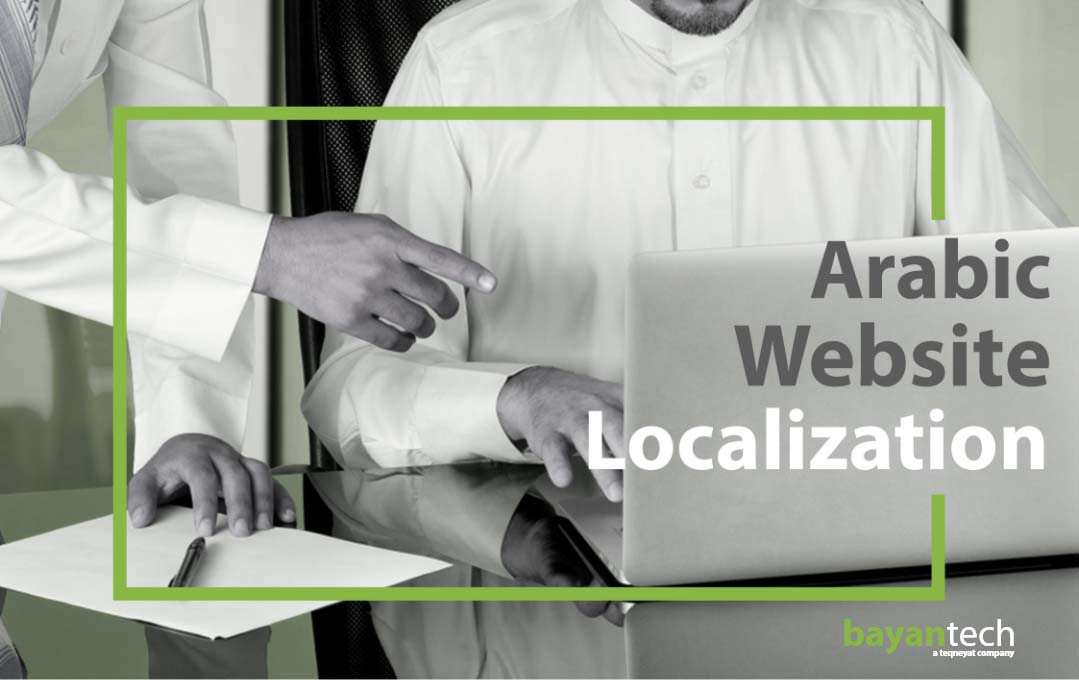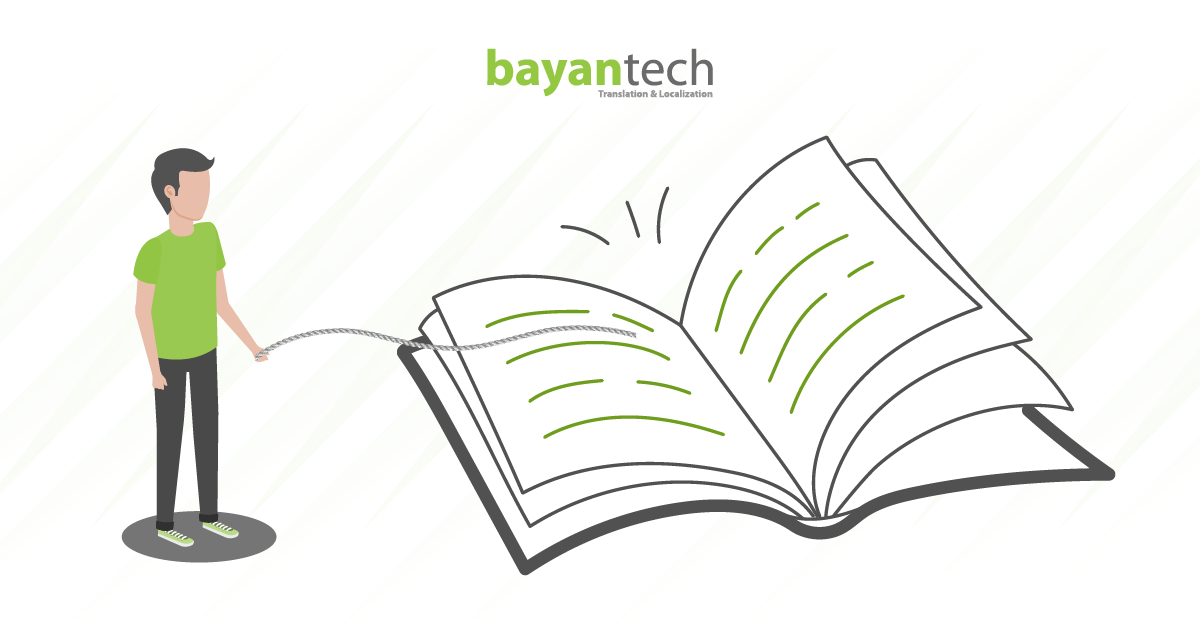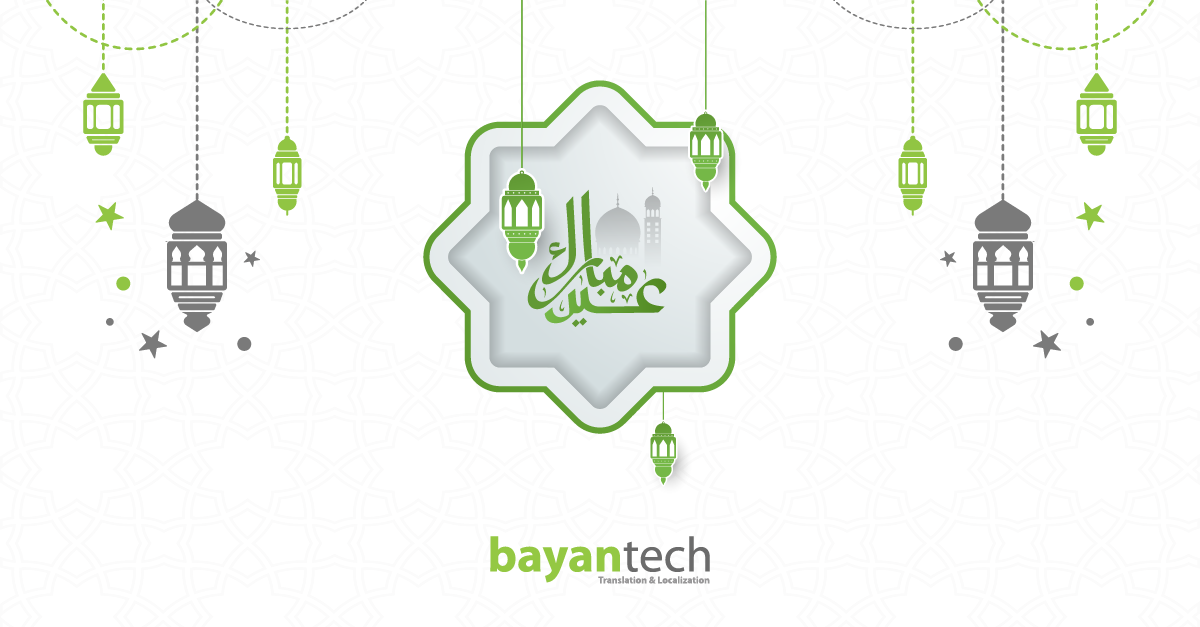Technology has given businesses from all around the globe the possibility of expanding at unprecedently low costs. If you’re planning to expand to the Middle East, there’s an enormous market out there, waiting for you. The Arabic language is one of the four most used languages on the internet, as reported on Internet World Stats, with 237,418,349 internet users around the world, as of January 2020.
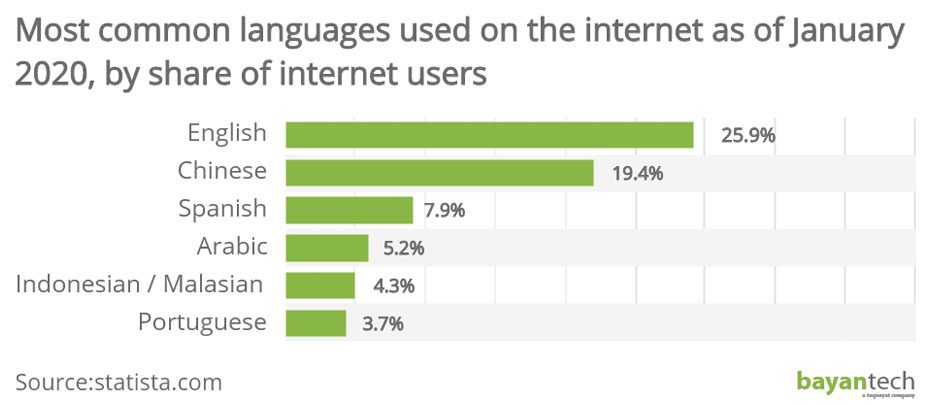
Throughout the years, numberless studies have shown that users strongly prefer websites in their native language. Especially, when making purchases. To fully realize its market potential, a retailer working to expand its presence to the Middle East should have E-Commerce Website Localization as one of its key marketing priorities.
In this post, we’ll dive into the importance of implementing the right localization process when launching your website in the Arabic language. We’ll also share a few useful tips for a successful Arabic Website Localization.
But first, let’s take a look at website localization as a practice.

What’s Arabic Website Localization?
Arabic Website Localization is the process of adapting a website so it meets the needs of users in markets where Arabic is spoken, namely the Middle Eastern and African markets. This adaptation process is not just linguistic. It also takes into account the cultural and technical dimensions that distinguish this region and the Arabic language.
Localization goes beyond effective translation services. It involves UI redesign, localized search engine optimization efforts, among other processes. And this is especially visible in the case of Arabic.
For instance, when localizing a website from US English to Arabic, part of the process will involve mirroring elements of the user interface, according to local conventions.
Although the possibility of localizing your website into the Arabic language may seem daunting, it’s both necessary to enter most Middle Eastern markets and absolutely worth the effort. And, in the long run, it won’t only save you both costs and headaches, but it will also spell massive revenues. This is particularly true, if you’ll leave your project in the hands of expert Website Localization Services providers.
Especially if you’re geographically distant from the Middle East, there are some crucial nuances you may not understand as clearly as you should. Let’s take a quick dive into linguistic diversity.
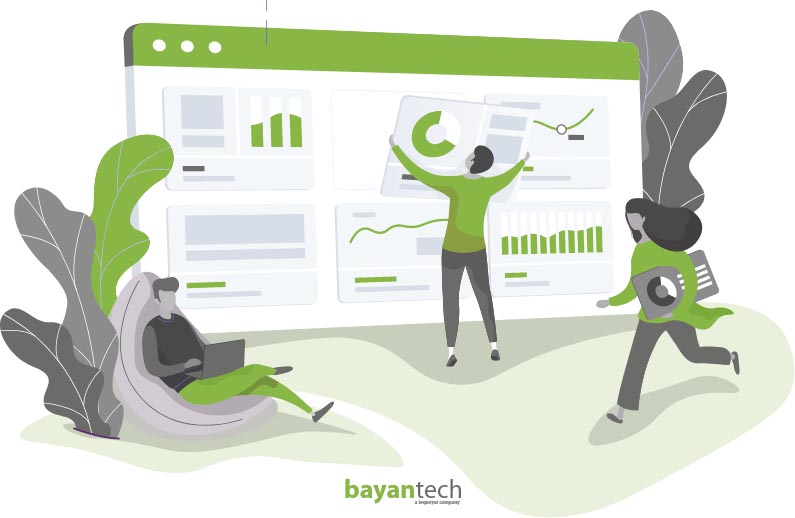
A Brief Introduction Into Arabic Linguistic Diversity
The Middle East is at its peak of expansion. It’s a large and rich market, with millions of enthusiastic consumers and a lot of potential. Needless to say, the Middle East is a diverse region, which can’t be fully explained in a short article – neither in a book. It’s everchanging, and one has to live it to fully understand it.
But, if you’re finding cues that lead to the Middle East as your next global market, there are some things you need to know.
Arab countries share the same official language: Arabic. With more than 400 million speakers around the world and official status in 25 countries, Arabic is not a monolith.
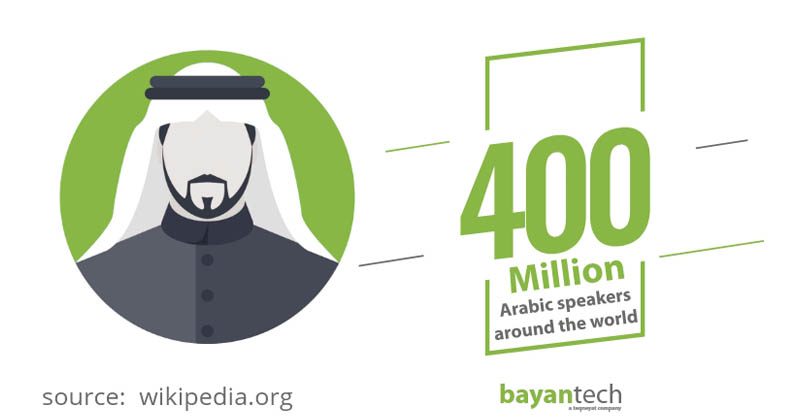
If one had to locate the Arabic language within a discreet region, it’d be Asia, with 12 Arabic-speaking countries:
- Bahrain
- Iraq
- Jordan
- Kuwait
- Lebanon
- Oman
- Palestine
- Qatar
- Saudi Arabia
- Syria
- United Arab Emirates
- Yemen
However, the largest Arabic speaking country as of 2020, and the largest Modern Standard Arabic-speaking country, is Egypt, located in Africa, with over 82 million people fully fluent in the official language. Other African countries that use the language are Algeria, Chad, Comoros, Djibouti, Eritrea, Libya, Mauritania, Morocco, Somalia, Sudan, Tanzania, and Tunisia.
But Arabic speakers can be found all around the world. For example, in Europe, around 3.73% of the population of Belgium, 2.64% of the population of France, and 1.38% of the population of the United Kingdom speak the Arabic language at home. Not to mention, over one million native Arabic speakers are residing in the United States. So, even if you’re not targeting audiences in Asia or Africa, if you’re addressing the needs of Arabic-speaking populations in your country, you can’t foresee the need for Arabic website localization.
Like any major language, Arabic has numerous dialects, a product of the interaction between different nations and different historical processes. The Arabic spoken in Yemen, for instance, differs significantly from Iraqi Arabic or Egyptian Arabic.
That’s why, if you want to achieve an exceptional and effective Arabic Website Translation, you’ll need reliable local experts in the field who perfectly understand the country you’re targeting and how Arabic manifests there. One simple word in one country may be interpreted as a completely different thing in another country, leading to undesired outcomes. Needless to say, an expert Arabic website localization services provider will be able to guide you through this aspect of your project.
One of the most important things you need to be aware of is the primordial differences that exist between the way the Arabic language is written and the numerous ways it is spoken. Basically, there are three different Arabic forms: local dialects, Modern Standard Arabic, and Classical Arabic.
Since Classical Arabic is understood but not actively spoken (think of it as a chronolect), we won’t be discussing it today. Instead, we’ll focus on the diverse local dialects we find across the Arab world and Modern Standard Arabic. The latter is the recommended form of the language for Arabic website localization.
Sign up to our newsletter to receive the latest blogs and news.
Local Arabic Dialects and Their Differences
Local dialects are culture-specific and are linked to different geographies. There are nine main groups of local Arabic according to the Arabic language teacher Anders B. Uhlin:
- North African Arabic, spoken in Morocco, Algeria, Tunisia and Libya.
- Hassaniya Arabic, spoken in Mauritania.
- Egyptian Arabic, spoken in Egypt.
- Levantine Arabic, present in Lebanon, Syria, Jordan and Palestine.
- Iraqui Arabic, spoken in Iraq.
- Gulf Arabic, the language of Kuwait, Bahrain, Qatar, the U.A.E. and Oman.
- Hejazi Arabic, present in Western Saudi Arabia.
- Najdi Arabic, spoken in Central Saudi Arabia.
- Yemeni Arabic, the language of Yemen & southwestern Saudi Arabia.
The two most widely understood dialects are Egyptian and Levantine Arabic, due to the role of the Egyptian media industry in the Arab world, and thanks to its prolific cinematic production. Egyptian Arabic is probably one of the most easily understood dialects across the Arab world.
The differences between dialects from the Middle East (Egypt, Iraq the Levant, and the Gulf dialects) may compromise communication, in some instances. Especially, due to differences in vocabulary.
For instance, whether an Egyptian Arabic speaker is able to communicate with a speaker of Gulf or Levantine Arabic will depend on education, context, and whether the speaker makes a conscious effort to make themselves easy to understand.
On a side note, North African dialects tend to be more distinctive due to their unique structure and vocabulary and harder for Middle Eastern Arabic speakers to understand.
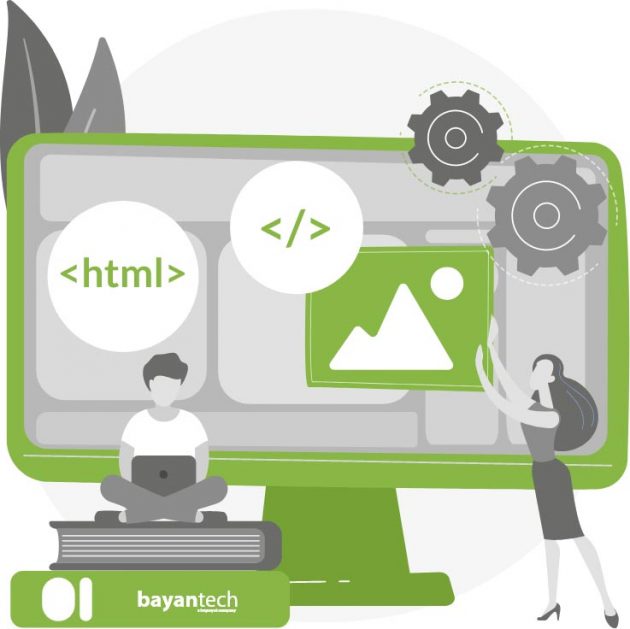
Modern Standard Arabic: the Best Option when localizing for the Arabic market
Modern Standard Arabic (MSA) descends directly from Quranic Arabic, and acts as a lingua franca, since it’s the preferable form of use all around the Arab World, through writing and formal speaking.
Modern Standard Arabic is also one of the six official languages of the United Nations, and the official and a co-official language of 22 countries.
It is taught in schools and universities, by exposing the students to radio, television, newspapers, magazines, and religious texts. Thanks to this process, highly educated people are more likely to be highly proficient in speaking and writing in MSA. In the rest of the population, the skill levels vary significantly according to the different academic levels achieved.
MSA comprises several registers that can be used for different particular goals in specific social settings. Used through its higher register (which is closer to Classical Arabic in structure and vocabulary) in formal speaking situations such as sermons, lectures, news broadcasts, and speeches; and formal writing, like official correspondence, literature and newspapers. Lower registries of MSA that can be used in informal contexts might differ depending on every country since they englobe a mix of MSA with local spoken varieties.
Due to its wide usage, and its application in formal settings, MSA is the best option for Arabic website localization, since it guarantees clear understanding across locales.
But, can a single, unified localization strategy be effective in such a diverse region? Let’s take a look at some Arabic website localization best practices.
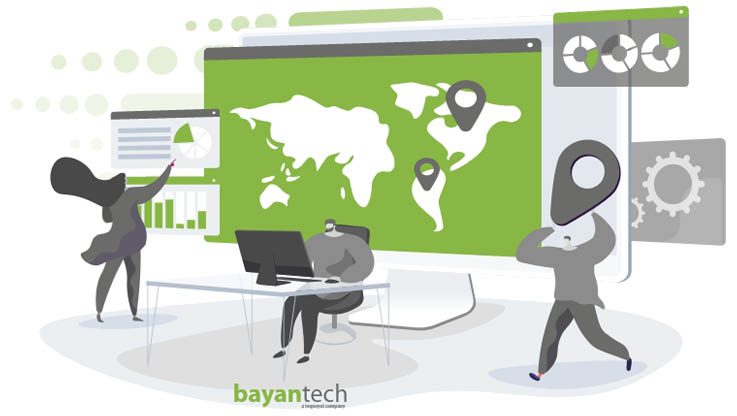
5 Arabic Website Localization Tips
In this section, we’ll share 5 Arabic website localization tips. Remember that the most effective approach is hiring a team of Arabic website localization specialists at a trustworthy translation company.
But, as a decision-maker, understanding what makes a successful project will help you better strategize this dimension of your expansion plan.
Go Local
As we have explained before, Modern Standard Arabic is the best linguistic choice to approach a successful Arabic Website Localization project, because of its use on printed media.
Nevertheless, experts often recommend targeting, not the Middle East as a whole, but specific countries and regions. If this will be your approach, implementing a proper website and content localization services will involve developing material in your target audience’s specific dialect.
After identifying the target audience and recognizing their preferred dialect, professional Arabic translators should be able to provide the best Arabic translation services, combining precision with strategic cross-cultural adaptation.
Work with Cultural Differences
When adapting marketing content to the MENA region (your website included), you should acknowledge and navigate the difference between your culture and your target culture.
Adapting your website to the MENA region may involve revising symbols, humor, colors, and customer representations. Not only do you want your customer representations to look like people from the target region, but you’ll also want to make sure these characters are dressed in a way that reflects your new customers and that meets local conventions regarding appropriateness and formality.
If your brand uses animals in its marketing material, you may want to revise that choice as well, along with the use of music in your brand videos.
Aside from these “basic” considerations, you’ll want to recognize and implement trends that make your content more relatable and engaging to your audience. So, taking a deep look at culture is necessary.
Element Mirroring
When implementing Arabic Website Translation and localization some linguistic challenges need to be taken into account, such as the fact that Arabic has a right-to-left (RTL) writing system, where words are written in horizontal lines that go from right to left. In this case, it is important to implement a website language localization process that addresses the website’s layout, mirroring UI elements as necessary.
Some elements you’ll need to mirror are:
- Timelines
- Arrows and icons that communicate direction
- Navigation buttons
- Vertical scrollbars (they should be placed on the left end of the browser)
If you want to see a real example of flawless Arabic website localization, take a look at the Arabic version of the BBC’s website, which shows how by simply applying the accurate website translation and localization, a website can look, feel and function like originally Arabic web pages would.
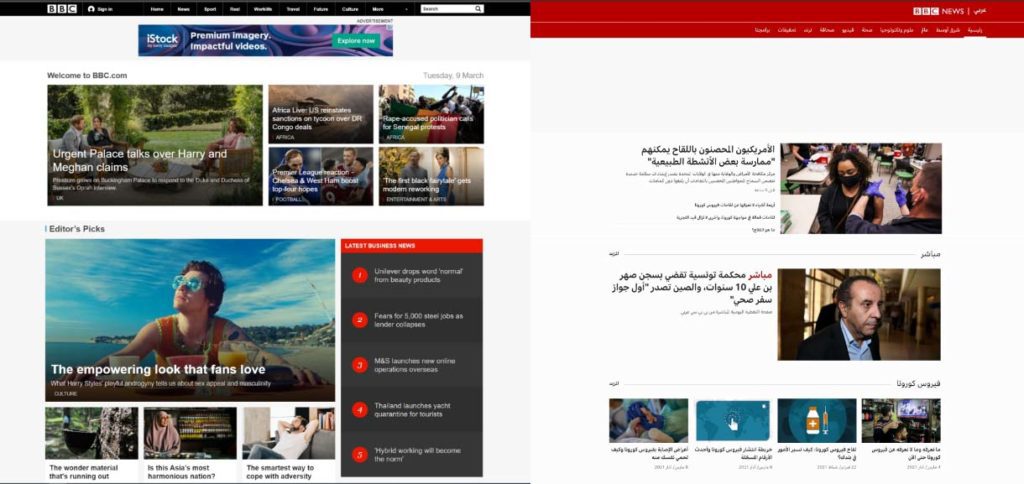
Web Font Adaptation
Another important Arabic language consideration for web design is the need to replace your current web fonts with Arabic ones.
Aside from replacing your font family, a proper Arabic website localization project should involve rethinking how fonts are used throughout the website.
For instance, if you rely on bold and italic styles for highlights and for organizing information, the design will need to be adapted so other elements serve that hierarchy-creating function. Why? Simple: Arabic doesn’t have these styles.
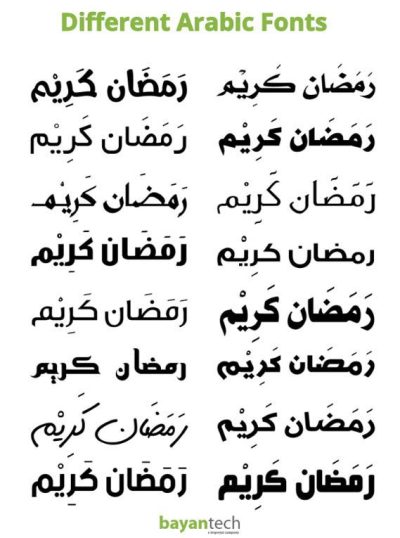
Payments & Microservices
Most modern websites use third-party services to process online payments, giving their users the possibility to book meetings and other functionalities that must be handled by specialized companies.
Localization also involves revising these microservices and adapting the integrations to your target locale. For instance, in Morocco, you won’t want to use Stripe to process payments, but another middleman such as Skrill.
Make sure that all your microservices have fully localized (and convenient) versions of their platform, available in your target locale.

Don’t Overlook Quality Assurance & Testing
Once Arabic translators have finished adapting the site, the team should ensure the integrity and functionality of the website by conducting functional testing. This will help them check for linguistic, functional, contextual, or cultural issues.
While QA is always a key step in localization, it becomes even more important in Arabic website localization projects, since Arabic translation usually involves making significant changes to a website’s structure, so there’s plenty of room for error.
As a decision-maker, you should ask potential language partners about their quality assurance processes specifically.
Conducting Arabic Website Localization?
Whether you’re a linguist or a decision-maker, check
out our quick guide to Arabic localization.
Leave it in the Hands of Experts
These days, a website and a social media presence are the most important marketing assets a brand has. And, used correctly, they can be tools for incredible global growth.
Arabic localization can seem daunting, but it doesn’t have to be with the right partners.
At bayantech, our translators are native speakers and subject matter experts, working under a specialized project manager, with the latest translation tools, and an ISO-certified commitment to website localization best practices.
As a language leader in the MENA-region, we carry out full-scale Arabic website translation and localization projects for leading brands across the globe.
Whether it’s using a website translation proxy or redefining your CMS workflow, we have the technical and linguistic expertise to make it possible.
Hiring a professional language service provider with a team of software localization specialists will guarantee a made-to-measure solution that drives results.

